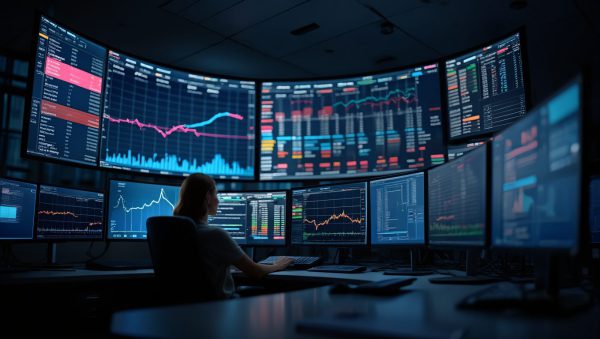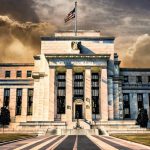
What is the Santa Claus Rally? A Psychological Phenomenon Wrapped in Market Mythology
Apr 4, 2025
Fear is the great manipulator of markets. It clouds judgment, fuels irrationality, and incites chaos. Like a virus spreading through the bloodstream of the financial system, fear infects traders and investors alike, forcing them into reactive, herd-like behavior. But there’s another, subtler emotion that controls the market—hope. And nowhere is this delicate balance of fear and hope more apparent than during the so-called Santa Claus Rally, a time when optimism and greed replace cold logic, and irrational exuberance carries the market to unexpected heights.
But make no mistake: the Santa Claus Rally is no gift from the heavens. It is a phenomenon born of psychology, fueled by collective sentiment, and prone to exploitation by the bold and contrarian. For the unprepared, it’s a trap disguised as an opportunity. For the savvy, it’s a fleeting moment of clarity amidst the chaos. This is your warning: if you enter this season without understanding its complexities, you risk becoming another victim of the herd mentality.
The Psychology of the Santa Claus Rally: A Dance Between Fear and Hope
First, let’s unravel the myth. The Santa Claus Rally refers to a historical tendency for stock markets to rise in the last week of December and the first two trading days of January. It’s a period of seemingly irrational optimism—a time when the year’s final trading sessions defy expectations and deliver outsized gains. But why does it happen?
It’s not magic. It’s psychology. Human emotions drive markets, and the end of the calendar year is a potent cocktail of psychological forces. Investors, flush with holiday cheer and emboldened by bonuses, are more likely to take risks. Retail traders, hoping to capitalize on last-minute gains, pile into the market. Fund managers, eager to pad their annual performance metrics, engage in window dressing—buying high-performing stocks to make their portfolios look better. And then there’s the tax effect: investors who sold for tax-loss purposes earlier in December may re-enter the market to position for the new year.
But beneath all this lies a deeper, more primal force: the fear of missing out (FOMO). As markets rise, the herd rushes in, afraid to be left behind. It’s a self-reinforcing cycle of optimism and greed. Yet, paradoxically, this same optimism can sow the seeds of future panic. Because when the rally ends—and it always does—those who chased the highs are often left holding the bag.
Exploiting Irrationality: The Contrarian’s Playbook
Contrarian investors thrive in moments of collective irrationality. While the herd chases the Santa Claus Rally, the contrarian watches from the sidelines, waiting for the perfect moment to strike. This is not cynicism; it’s strategy. The market is a game of probabilities, and those who understand the dynamics of fear and greed have the edge.
Take the example of Jesse Livermore, one of the greatest speculators of all time. Livermore understood that markets are driven by emotions, not logic. He thrived by identifying points of maximum irrationality—when fear or greed pushed valuations to extremes—and positioning himself accordingly. He didn’t simply follow the trend; he exploited it. This is the essence of contrarian mastery: recognizing that the Santa Claus Rally, like all market phenomena, is a double-edged sword.
Consider the dynamics at play during this period. Low trading volumes often drive the rally, as many institutional players are on holiday. This lack of liquidity amplifies price movements, creating the illusion of strength. But savvy investors know that low-volume rallies are fragile. They understand that the real opportunity lies not in chasing the rally but in positioning for the inevitable reversion to the mean.
For instance, selling put options during the rally can be a powerful strategy. As optimism peaks, implied volatility tends to drop, making options cheaper. By selling puts on high-quality stocks, you can collect premiums while positioning yourself to acquire shares at a discount if the rally falters. And if the rally continues? You keep the premium as profit. It’s a win-win for the disciplined contrarian.
The Paradox of the Santa Claus Rally: Hope’s Hidden Cost
Here’s the paradox: While the Santa Claus Rally is fueled by optimism, it often sets the stage for future volatility. The rally’s gains are rarely borne of fundamental strength; they’re the product of sentiment, low liquidity, and temporary forces. And when January arrives, reality returns with a vengeance.
Think of it like a chemical reaction. The rally injects energy into the market, creating a temporary state of euphoria. But once the reaction subsides, the system seeks equilibrium. This is why the first weeks of January—known as the “January Effect”—are often marked by heightened volatility. The excesses of December must be unwound, and the herd, once emboldened by hope, retreats into fear.
The contrarian understands this dynamic. They know that the rally is not an endpoint but a catalyst—a moment of transition that creates opportunities for those who can see beyond the surface. This requires not just technical skill but emotional discipline. Because the market, like a quantum system, is inherently unpredictable. It exists in a state of superposition, poised between optimism and despair, until an external force collapses it into a new reality.
Disciplined Boldness: Mastering the Chaos
To navigate the Santa Claus Rally effectively, you must embrace disciplined boldness. This means developing a clear strategy, grounded in rigorous analysis and emotional control. It means resisting the urge to chase the herd and instead positioning yourself to capitalize on their mistakes.
Start by recognizing the rally for what it is: a short-term phenomenon, not a long-term trend. Use technical indicators, like the stochastic oscillator or RSI, to identify overbought conditions and potential reversal points. Combine this with broader market analysis to understand the rally’s underlying drivers. Is it fueled by genuine economic strength, or is it a product of low liquidity and sentiment?
Next, define your risk parameters. Know exactly how much you’re willing to lose on a trade before you enter it. Use stop-loss orders to protect your downside, and don’t let emotions dictate your decisions. Remember, the market doesn’t care about your feelings. It rewards logic, discipline, and preparation.
Finally, adopt a contrarian mindset. Look for opportunities to exploit the herd’s irrationality, whether through options strategies, short positions, or simply sitting on the sidelines until the dust settles. The key is to act with precision and purpose, not impulsively. In the words of Warren Buffett, “The stock market is a device for transferring money from the impatient to the patient.”
Beyond the Rally: A Vision of Empowerment
The Santa Claus Rally is more than a market anomaly. It’s a window into the human psyche—a reminder of the power of emotions to shape financial outcomes. By understanding this phenomenon, you gain more than just a trading edge; you gain insight into the forces that drive markets and, by extension, the world.
But this understanding comes at a cost. To see the rally for what it is—to see the market for what it is—you must abandon the comfort of the herd. You must embrace uncertainty, contradiction, and paradox. You must be willing to think differently, act boldly, and take calculated risks when others hesitate.
In doing so, you unlock a new level of empowerment. You break free from the fear-driven herd mentality that traps so many investors. You cultivate intellectual autonomy, the ability to think critically and independently. And most importantly, you position yourself to thrive in a world of chaos and complexity.
So, the next time the Santa Claus Rally sweeps through the market, ask yourself: will you chase the herd, or will you rise above it? The choice is yours. Make it wisely.












Colbert is a vile LibNazi traitor! SPIT! He’s part of the whole Lefty Looney Propaganda Machine.